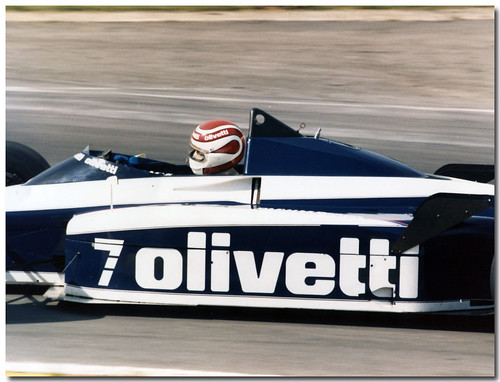With the long summer break underway and the fantastic influx of new members I thought I'd start a thread for those niggling questions that some of us have eating away at us from time to time, but which we might feel embarassed about asking. As far as I'm concerned there should be no limits here, doesn't have to be anything technical, or even F1-specific.
I would ask before we start that everyone who asks a question is given their due respect. Remember, none of us knew the answers to anything until someone told us. So let's share the wealth eh?
I'll kick off with two things that trouble me from time to time:
1) The turbo cars didn't have roll-hoop mounted airboxes, but the atmospheric cars (both before and after) did/do. What specifically was it about the turbo engines that explains this? So far as I know they need an air intake like any other engine. Some turbo cars had little chimney intakes on the sidepods, but not all, e.g. Benetton B186.
2) Before the start of the season the FIA crash-tests all the F1 teams' new monocoque chassis. I note that the HRT cars that turned up at Bahrain were numbered #01 and #02. So are those crash-tested tubs discarded following the tests, or can they be used again for racing (assuming they passed, obviously)?
Any answers or educated guesswork much appreciated. And if, like me, you have more questions than answers, feel free to bung them on here.
I would ask before we start that everyone who asks a question is given their due respect. Remember, none of us knew the answers to anything until someone told us. So let's share the wealth eh?
I'll kick off with two things that trouble me from time to time:
1) The turbo cars didn't have roll-hoop mounted airboxes, but the atmospheric cars (both before and after) did/do. What specifically was it about the turbo engines that explains this? So far as I know they need an air intake like any other engine. Some turbo cars had little chimney intakes on the sidepods, but not all, e.g. Benetton B186.
2) Before the start of the season the FIA crash-tests all the F1 teams' new monocoque chassis. I note that the HRT cars that turned up at Bahrain were numbered #01 and #02. So are those crash-tested tubs discarded following the tests, or can they be used again for racing (assuming they passed, obviously)?
Any answers or educated guesswork much appreciated. And if, like me, you have more questions than answers, feel free to bung them on here.






